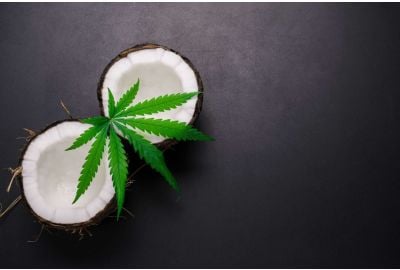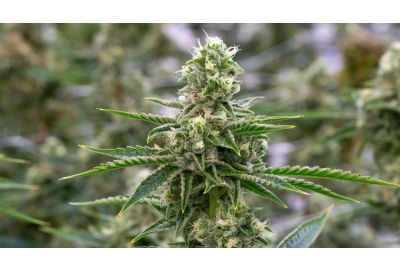How To Make A Mix Of Marijuana Nutrients In 6 Easy Steps
Heavy yields are only possible if you feed your cannabis plants well. You need to know what to feed, how much to feed and when to feed. When mixing your nutes, it’s vitally important to use the correct quantities. This article will take a look at the best way to make and prepare a mix of the best nutrients for weed plants depending on the different growth stages.
When it comes to cannabis nutrients, you need a good understanding of the types of nutrients needed for different stages of growth. You also need to understand how your choice of grow medium affects the nutrient requirements. The mixes are dependent on mediums such as coco coir, perlite, hydro, and soil. It is not simply a case of knowing the good nutrients for weed plants, you also have to understand when your plants require them and in what quantities.
Nutrients can come in liquid or powdered form. You can also make compost or buy a prepackaged mix. Generally, plant food is centered on the three primary macronutrients - nitrogen (N), phosphorus (P) and potassium (K) - usually illustrated as NPK ratios. In the case of the essential nutrients for growing weed, your plants will require different NPK mixes as they progress through the growth stages, as well as assorted other micronutrients.
1. Choose Your Cannabis Nutrients
Before preparing your mix of marijuana nutrients, gather all the materials you will need ahead of time.
With fertilizers, always choose the best quality product you can afford. They will be able to advise you in the store and you can always look at online reviews. Make sure you choose the appropriate N-P-K ratio based on the growth stage (as illustrated below).
| Growth Stage | Nitrogen (N) | Phosphorus (P) | Potassium (K) |
| Vegetative | High | Medium | High |
| Flowering | Low | Medium to High | High |
These are some of the bestselling brands, highly recommended by experts.
- FoxFarm Soil Liquid Trio (Soil)
- Botanicare Pure Blend Pro (Soil)
- Botanicare Kind Nutrient System (Hydroponics)
- General Hydroponics Flora Series (Coco Coir and Hydroponics)
- Canna Coco A & B (Coco Coir)
As Well As Marijuana Nutrients, You Will Also Need...
Aside from marijuana grow nutrients, you will also need measuring tools, particularly measuring cups or spoons and 10-ml syringes. You will also need a TDS meter, EC meter and a pH meter. Also, prepare some pH up or pH down solutions. You can use potassium hydroxide to increase the alkalinity, and nitric acid or phosphoric acid to bring down the pH.
2. Prepare The Water
Once you’re prepared, it’s time to fill a bucket (a tank or a reservoir for hydro systems) with lukewarm water. Good-quality water is a must. Contaminated water can lead to stunted plant growth or, in the worst cases, the presence of harmful toxins in your bud.
Distilled water is the best choice, albeit costly. Most growers use tap water but this has to be prepared before use.
Tap water often contains chlorine - an unwanted additive for a high-quality nutrient mix. Fortunately, it’s pretty easy to remove. Simply draw the water into a clean bucket and let it sit for 24 to 48 hours. The chlorine should dissipate by then.
Besides chlorine, tap water contains useful minerals but additional impurities, too, for which you’ll need a filtration system. A reverse osmosis (RO) system will do the trick, but note that RO does not remove chlorine so your water will still need to sit.
Note: Tap water treated with chloramine instead of chlorine should be filtered with activated carbon before running it through an RO system.
Before using the prepared water, take a reading using a TDS meter. The ppm should range between 100 to 150. If it’s too high, indicating the presence of excessive particles, you need to filter the water again. If the ppm falls below 70 ppm, you can raise it by adding some cal-mag supplement to reach at least 100 ppm.
3. Mix Marijuana Grow Nutrients Into The Water
Thoroughly read the instructions. A good way to err on the side of caution is to start with half the recommended strength of mix, especially when transitioning between growth stages. This way, you can ease the plants into the new mix and gradually reach the ideal strength. Look out for signs of nutrient deficiency and adjust accordingly.
Keep good records. A journal is a great way to amass data and learn what works and what doesn’t.
The physical act of mixing your marijuana nutrients is the easiest part. Pour slowly, mix with something clean and when you think it’s mixed enough, mix again.
4. Measure EC And Adjust Cannabis Nutrients
EC stands for electric conductivity and indicates the total amount of dissolved ionic salts - or the strength of nutrients - in the solution. Simply put, the EC reading lets you know the volume of nutrients in the liquid. It’s expressed as mS/cm (millisiemens per centimeter) or μS/cm (microsiemens per centimeter).
Keeping the EC value within optimum levels is essential to healthy plant growth. An excessive concentration of salt, for example, leads to nutrient lockout and an inability to absorb water.
The EC reading can also tell you if you need to add more nutrients. By measuring EC, you can prevent nutrient deficiencies and ensure vigorous growth.
Depending on the growth stage, the nutrients for weed plants are different and this may also vary from strain to strain. Since so many factors are involved, there are "standard" EC levels. The following chart should give you an idea of optimal EC values.
| Growth Stage | Recommended EC Values (in mS/cm) | Recommended EC Values (in μS/cm) |
| Seedling | 0.4 to 0.5 | 400 to 500 |
| Early Vegetative | 1.1 to 1.4 | 1100 to 1400 |
| Late Vegetative | 1.2 to 1.5 | 1200 to 1500 |
| Early Flowering | 1.1 to 1.4 | 1100 to 1400 |
| Late Flowering | 1.3 to 1.6 | 1300 to 1600 |
Recommended Digital EC Meter Brands
To obtain the EC value of the nutrient solution, you’ll need a good-quality EC meter. There are several brands available, with prices ranging from tens to hundreds of dollars. Try to get the best one your budget allows, one that can also measure pH, TDS and temperature. Some products to check out include:
- COM-360 Waterproof Professional Series pH/EC/TDS/Temperature Meter by HM Digital
- HI9813-6 Portable pH/EC/TDS/Temperature Meter by Hanna Instruments
- PC60 Premium Multiparameter Pocket Tester Kit by Apera Instruments
How to Use an EC Meter
When using the EC meter for the first time, don’t forget to calibrate it. Read and follow the instructions provided.
To use:
1. Slowly submerge the electrode probe into the mix of marijuana grow nutrients, holding it in place for about two minutes (or as advised by the manufacturer).
2. Wait until the reading is shown on the digital screen before taking it out.
3. Take note of the value then turn off the meter.
4. Rinse the electrode with clean water before replacing the cap.
If the EC reading is too low, simply add more nutrients until the value falls within the ideal range. On the other hand, if it is too high, dilute the mix with water to lower it. Remember to stir well each time you add marijuana grow nutrients or water, and to measure the EC value afterwards.
5. Measure and Adjust the pH Level
After correcting the EC value, it is time to work on the pH of the solution, ensuring that it falls within optimal levels. If growing in soil, keep the pH between 6.0 to 6.8. For hydroponic or soilless systems, adjust the pH to a range of 5.5 to 6.5. Anything outside of the ideal range may see nutrient deficiencies and weak plants.
How to Measure the pH Level
For fuss-free pH measurement, use a digital pH meter. As always, ensure it is correctly calibrated before use. Refer to the instructions manual on how to do it.
To use:
1. Remove the protective cap from the pH tester.
2. Rinse the electrode with distilled water, then carefully wipe it with a cleaning pad or a paper towel.
3. Turn on the meter and dip the probe into the nutrient solution. If the meter has a hold unit, be sure to press and hold it in place for up to two minutes, (or as advised by the manufacturer).
4. Wait until the pH level on the digital display has stabilized. Some models, though, may not settle on a single value no matter how long you wait. In this case, stop measuring when the reading has become more or less steady - or when it has stopped significantly rising or dropping.
How to Adjust the pH Level
To decrease the pH value, fill a syringe with a pH down solution, such as this one from General Hydroponics. In general, you will need one ml per gallon of water to bring down the pH level by one point. Always check the packaging for the suggested amount to use. Alternatively, you can use nitric acid or phosphoric acid.
If you need to raise the pH level, use pH up liquid solutions. You can use General Hydroponics or alternatives such as potassium hydroxide or liming substances.
When increasing or lowering the pH, be sure to stir the marijuana nutrient mix after every application. Also, measure the pH before adding more adjusting solutions.
6. Keep The Cannabis Nutrients Solution Sufficiently Warm
The nutrient solution is almost ready. All that is left to do is ensure that it sits at the right temperature - or about 72°F (22°C). Giving the plants colder water may cause the roots to congest, resulting in nutrient deficiencies and stunted growth. On the other hand, a too-warm solution may inhibit nutrient absorption and invite the formation of fungi.
To check the temperature, you need a water thermometer. Many EC and pH meters also measure temperature.
If the water temperature is too low, you may have to use a heating device to increase it. In this case, an aquarium heater is recommended. If it is too high, a water cooler or water chiller will be useful. This equipment is a must if you are growing in hydro. Either way, opt for a model that can stabilize and keep the water temperature constant at all times.
And there you have it, nute-mixing 101. If you’ve any questions or queries then please reach out to us via the usual channel. Happy feeding!!!


